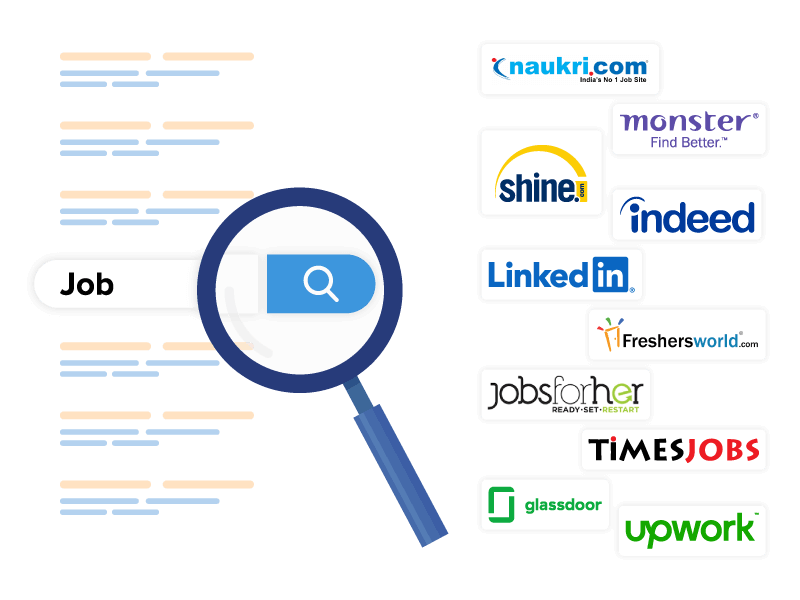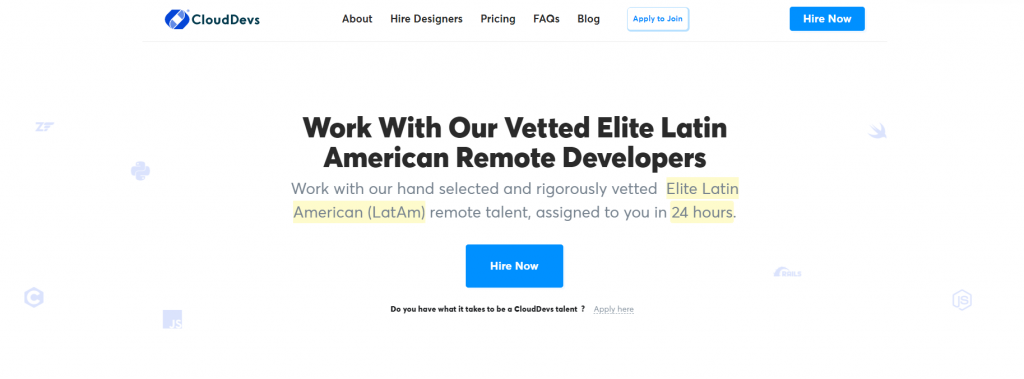Where to Hire LatAm Developers in 2024?
Table of Contents
The software development industry is experiencing unprecedented growth, fueled by advancements in technology and the increasing demand for digital solutions across various sectors. As businesses strive to stay ahead in this competitive landscape, the search for skilled software LatAm Developers has expanded globally. In response to this demand, Latin America (LatAm) has emerged as a prominent destination for sourcing developer talent. With its growing tech ecosystem, favorable economic factors, and a pool of highly educated professionals, LatAm offers an attractive option for companies looking to bolster their development teams.
Why Hire LatAm Developers?
Hiring LatAm Developers from Latin America presents a multitude of benefits that can significantly impact a company’s success in the tech industry. Firstly, the region boasts a diverse talent pool, with LatAm Developers possessing a wide range of skills and expertise. This diversity allows businesses to find LatAm Developers with specialized knowledge that aligns with their specific project requirements.

Additionally, LatAm Developers often offer cost-effective solutions without compromising on quality, making them an attractive option for companies seeking efficient and affordable development services. Moreover, the favorable time zone alignments between Latin America and major business hubs such as North America enable seamless collaboration and communication, fostering greater productivity and efficiency within distributed teams. These advantages collectively contribute to the competitiveness and agility of businesses operating in the fast-paced tech landscape.
This article will delve into the intricacies of hiring LatAm Developers from Latin America in 2024, covering various aspects to consider when engaging with this talent pool. Beginning with an exploration of the fundamental role of LatAm Developers and the skills required in the industry, we will examine the advantages of hiring from LatAm, including cost-effectiveness, cultural compatibility, and access to high-quality education. Subsequently, we will discuss important considerations when hiring LatAm Developers from the region, such as language proficiency, remote working experience, and legal considerations. We will also identify the top countries in Latin America known for their developer talent and discuss their unique strengths and specialties. Furthermore, we will highlight popular job platforms and provide strategies for effectively utilizing them to connect with LatAm Developers.
We will explore the challenges associated with building and managing remote development teams in Latin America and offer mitigation strategies to overcome these obstacles. By addressing these topics comprehensively, this article aims to equip readers with the knowledge and insights necessary to navigate the process of hiring LatAm Developers from Latin America successfully.
Role of a Developer:
Developers play a crucial role in the creation, design, and maintenance of software applications and systems. They are highly skilled professionals who possess expertise in programming languages and technologies necessary for building robust and functional software solutions. LatAm Developers are responsible for translating project requirements into code, implementing algorithms and data structures, debugging and troubleshooting issues, and optimizing software performance. Their role extends beyond mere coding; LatAm Developers collaborate with cross-functional teams, including designers, product managers, and quality assurance engineers, to deliver high-quality software products that meet user needs and business objectives.
Skills and Expertise Required to Become a Developer
Developers must possess a diverse set of skills and expertise to excel in their roles. Key technical skills include proficiency in programming languages such as Java, Python, JavaScript, C++, and others, depending on the specific requirements of the project. Geeksforgeeks provides a detailed overview of 13 technical skills every developer should possess. Additionally, LatAm Developers should have strong problem-solving abilities to analyze complex problems, identify efficient solutions, and debug code effectively. Familiarity with development frameworks and libraries, such as React, Angular, Django, or Spring, is essential for streamlining the development process and leveraging pre-built functionalities. Moreover, LatAm Developers need to be adaptable to new technologies and tools, as the tech industry evolves rapidly, requiring continuous learning and upskilling to stay relevant. A detailed description of the process to hire LatAm developers is right here.
Different Types of Developers
Within the field of software development, professionals often specialize in specific domains or areas of expertise. Three common types of LatAm Developers include:
- Front-end LatAm Developers: Front-end LatAm Developers focus on the user interface (UI) and user experience (UX) aspects of software applications. They are responsible for designing and implementing the visual elements of a website or application that users interact with directly. Front-end LatAm Developers utilize technologies such as HTML, CSS, and JavaScript to create responsive and user-friendly interfaces that enhance usability and accessibility.
- Back-end LatAm Developers: Back-end LatAm Developers primarily work on the server-side of software applications, managing data storage, retrieval, and manipulation. They design and implement server-side logic, databases, and APIs (Application Programming Interfaces) to facilitate communication between the front-end and back-end components of an application. Back-end LatAm Developers often use programming languages like Java, Python, Ruby, or Node.js, along with frameworks like Django, Spring Boot, Ruby on Rails, or Express.js.
- Full-stack LatAm Developers: Full-stack LatAm Developers possess proficiency in both front-end and back-end development, allowing them to work on all layers of an application stack. They have a comprehensive understanding of both client-side and server-side technologies, enabling them to develop end-to-end solutions independently or collaborate with specialized LatAm Developers in each domain. Full-stack LatAm Developers often have a broad skill set encompassing various programming languages, frameworks, and tools, making them versatile contributors to software development projects.
These different types of LatAm Developers complement each other’s expertise and collaborate closely to build comprehensive and functional software solutions that meet the needs of users and businesses alike. You have to know that there are so many other different language-specialized LatAm Developers.
Advantages of Hiring LatAm Developers
- Cost-effectiveness:
LatAm Developers often offer competitive rates compared to their counterparts in North America or Europe, making them a cost-effective solution for businesses. Despite the lower costs, the quality of work delivered by LatAm Developers remains high, allowing companies to achieve their project goals within budget constraints. CloudDevs bring a complete article on the reasons to hire LatAm developers here.
- Similar time zones and cultural compatibility:
The geographical proximity of Latin America to North America ensures overlapping work hours, facilitating real-time communication and collaboration between teams. This alignment in time zones minimizes delays in project progress and decision-making processes. Additionally, cultural similarities between Latin America and Western countries foster a harmonious work environment, promoting teamwork and productivity. It is advantageous to read a complete guide on hiring LatAm developers.
- High-quality education and technical skills:
Latin America is home to prestigious universities and technical institutes renowned for producing highly skilled LatAm Developers. These institutions offer comprehensive education programs that equip graduates with up-to-date knowledge and expertise in modern technologies and methodologies. As a result, businesses can access a talent pool of LatAm Developers with strong technical acumen and problem-solving skills.
- Growing tech ecosystems in Latin America:
The tech industry in Latin America is experiencing rapid growth, with emerging tech hubs attracting both local and international talent. These ecosystems provide a conducive environment for innovation, entrepreneurship, and collaboration, fostering the development of cutting-edge solutions and the exchange of ideas. By tapping into these tech hubs, businesses can access top-tier talent and stay at the forefront of technological advancements.
- Multilingual abilities:
Many LatAm Developers in Latin America are bilingual or multilingual, with proficiency in English and their native language. This linguistic diversity enhances communication within multinational teams, facilitating effective collaboration and knowledge sharing. Moreover, bilingual LatAm Developers can bridge language barriers and facilitate smoother interactions with clients, stakeholders, and team members from diverse cultural backgrounds.
These advantages collectively make Latin America an attractive destination for businesses seeking skilled LatAm Developers, offering cost-effective solutions, seamless collaboration, access to top-tier talent, and multilingual capabilities.
Considerations When Hiring LatAm Developers
- Language proficiency (English and Spanish):
Effective communication is crucial for successful collaboration between teams. Ensure that LatAm Developers possess adequate language skills in both English and Spanish to facilitate clear communication and seamless collaboration with international counterparts, clients, and stakeholders. Reading a complete guide on building a remote team from LatAm will help you make a better hiring decision.
- Communication and collaboration tools:
Utilize robust communication and collaboration platforms to overcome geographical barriers and facilitate seamless interaction among team members. Tools such as Slack, Microsoft Teams, Zoom, and Asana enable real-time communication, file sharing, task management, and video conferencing, fostering effective collaboration and teamwork within distributed teams.
- Remote working experience:
Prioritize LatAm Developers with prior experience in remote work environments, as they demonstrate self-discipline, effective time management, and the ability to thrive in virtual work settings. Previous remote work experience indicates familiarity with remote collaboration tools, such as project management software, communication platforms, and version control systems, enabling LatAm Developers to stay productive and engaged while working remotely.
- Intellectual property protection and legal considerations:
Implement comprehensive legal frameworks and contracts to safeguard intellectual property rights and ensure compliance with local regulations. This includes drafting non-disclosure agreements (NDAs), intellectual property assignment agreements, and employment contracts that clearly define ownership rights, confidentiality obligations, dispute resolution mechanisms, and compliance with data protection laws.
- Time zone differences and project management challenges:
Address time zone disparities by establishing flexible work schedules and adopting efficient project management methodologies to mitigate coordination challenges. Utilize tools and techniques such as staggered work hours, asynchronous communication, regular team meetings, and milestone tracking to accommodate different time zones, maintain productivity, and ensure project deadlines are met.
Top Countries in Latin America for Hiring LatAm Developers
The Latin American region has emerged as a global player in the tech sector, attracting attention from multinational companies and investors alike. How to hire LatAm developers? Governments across Latin America have implemented policies to promote innovation, entrepreneurship, and digital transformation, contributing to the rapid expansion of the tech industry.
An Overview of the leading countries for developer talent
What are the top destinations to hire LatAm Developers?
- Brazil: Brazil is home to a large pool of skilled LatAm Developers and a vibrant tech scene centered around major cities like São Paulo and Rio de Janeiro. The country’s diverse economy, multicultural society, and rich cultural heritage make it an attractive destination for businesses seeking talent. Brazil’s tech industry benefits from strong government support, a growing startup ecosystem, and access to a vast domestic market.
- Mexico: Mexico stands out for its strategic location and proximity to the United States, offering favorable time zone alignments and a robust infrastructure for tech development. Major cities like Mexico City and Guadalajara have emerged as hubs for innovation and entrepreneurship, attracting both local and international talent. Mexico’s tech industry benefits from a large domestic market, a young and tech-savvy population, and government initiatives to promote digital literacy and innovation.
- Argentina: Argentina is renowned for its strong education system and skilled workforce, particularly in software development. The capital city, Buenos Aires, is a major hub for tech talent, known for its dynamic startup culture and access to global markets. Argentina’s tech industry benefits from a well-established IT sector, world-class universities, and government incentives to attract foreign investment and promote innovation.
- Colombia: Colombia’s strategic location in Latin America, coupled with government initiatives to promote innovation, has positioned it as a hub for tech talent. Cities like Bogotá and Medellín are known for their growing tech ecosystems, supportive business environment, and access to international markets. Colombia’s tech industry benefits from a diverse talent pool, strong government support for entrepreneurship, and investment in infrastructure and digital connectivity.
- Chile: Chile stands out for its stable economy, business-friendly policies, and investment in education. The capital city, Santiago, houses a thriving tech community and attracts talent from across the region. Chile’s tech industry benefits from a well-developed startup ecosystem, access to venture capital, and government support for innovation and entrepreneurship.
Each country in Latin America offers unique advantages for businesses seeking to hire LatAm Developers. Brazil boasts a vast talent pool and a diverse economy, while Mexico’s proximity to the U.S. market and robust infrastructure make it an attractive destination for tech development. Argentina is known for its strong education system and skilled workforce, while Colombia’s strategic location and government initiatives support innovation. Chile offers stability, business-friendly policies, and a thriving tech community, making it a top choice for tech talent.
Popular Job Platforms for Hiring LatAm Developers
In today’s interconnected world, businesses have access to numerous online platforms and talent marketplaces that connect them with skilled professionals from around the globe. These platforms offer a convenient and efficient way to hire LatAm Developers remotely, eliminating geographical barriers and expanding the talent pool.

Whether businesses are seeking short-term freelance projects or long-term collaborations, online job platforms provide a centralized hub for sourcing and hiring talent across various industries and expertise areas.
Most Popular Platforms
(23) UPWORK ALTERNATIVES: THE 10 BEST PLATFORMS FOR FINDING FREELANCERS | LinkedIn
Several online platforms have gained popularity among businesses seeking to hire LatAm Developers from Latin America. Platforms such as Upwork, Freelancer, Toptal, and LinkedIn offer comprehensive solutions for connecting businesses with LatAm Developers. Read a comparison of Toptal Vs. CloudDevs here. These platforms provide access to a diverse pool of talent with varying skill sets and expertise levels, allowing businesses to find LatAm Developers that align with their project requirements and budget constraints. Whether businesses are looking for individual freelancers or dedicated development teams, these platforms offer a range of options to suit their needs. developersforhire.com provides a list of the 20 best sites to hire remote developers.
How to Effectively Use Platforms to Hire Remote LatAm Developers?
To maximize the effectiveness of hiring LatAm Developers on online platforms, businesses should: clearly define project requirements, offer competitive compensation, establish clear communication channels, and utilize platform tools for screening and verification.
- Clearly define project requirements: Provide detailed descriptions of project goals, objectives, scope, and deliverables to attract qualified candidates and ensure alignment with business needs.
- Conduct thorough screenings: Review candidates’ profiles, portfolios, and reviews carefully to assess their skills, experience, and credibility. Conduct interviews or technical assessments to evaluate candidates’ suitability for the project.
- Communicate expectations clearly: Establish open and transparent communication channels with hired LatAm Developers to convey project requirements, timelines, milestones, and expectations. Clarify roles, responsibilities, and deliverables to avoid misunderstandings and ensure project success.
- Establish transparent payment terms: Clearly outline payment rates, methods, schedules, and milestones to ensure fair compensation for LatAm Developers’ work. Utilize secure payment platforms and escrow services to protect both parties’ interests and mitigate payment disputes.
- Provide feedback and support: Offer constructive feedback and guidance to LatAm Developers throughout the project to help them improve and address any issues or concerns promptly. Foster a collaborative and supportive work environment to enhance productivity and morale.
Which is the Best Platform to Hire LatAm Developers?
CloudDevs stands out as the premier platform for hiring LatAm developers. With a roster of over 8000 skilled developers from Latin America who have undergone a rigorous three-step vetting process, CloudDevs ensures the highest standards in software development. One of its key advantages is its commitment to client satisfaction – developers work in the client’s time zone, and clients are offered a week-long trial period to assess the suitability of the assigned developers.
In the rare event of dissatisfaction, clients have the option to request a refund or choose another developer, demonstrating CloudDevs’ dedication to delivering top-notch service. Moreover, CloudDevs boasts an impressive lineup of Yii Developers, further solidifying its reputation as a go-to platform for accessing talent across Latin America.
In terms of pricing and accessibility, CloudDevs offers competitive hourly rates ranging from $45 to $75, providing clients with flexibility and affordability. Additionally, the platform’s efficient hiring process ensures that developers can be onboarded within 24 hours, enabling clients to swiftly kickstart their projects without delay. With its comprehensive offerings, stellar developer selection process, and client-centric approach, CloudDevs emerges as the best platform for businesses seeking to hire LatAm developers for their software development needs.
How to Build a Remote Development Team in LatAm?
Steps for creating and managing a remote development team:
- Step 01: Define project requirements and team roles
Begin by clearly defining the scope, objectives, and deliverables of the project. Identify the specific roles and responsibilities required for the development team, including LatAm Developers, designers, project managers, and quality assurance specialists. This is the first step to master onboarding remote developers.
- Step 02: Recruit talented LatAm Developers
Source talented LatAm Developers from Latin America through online platforms, referrals, or recruitment agencies. Evaluate candidates based on their skills, experience, cultural fit, and ability to work effectively in a remote environment.
- Step 03: Establish clear communication channels
Set up clear communication channels, such as video conferencing, instant messaging, and email, to facilitate real-time communication and collaboration. Ensure that team members have access to reliable communication tools and are familiar with their use.
- Step 04: Provide adequate training and resources
Offer training and resources to support remote work, including guidelines for effective communication, collaboration tools, and best practices for remote team management. Provide access to necessary software, hardware, and technical support to enable seamless remote work.
- Step 05: Implement project management methodologies
Adopt project management methodologies such as Agile or Scrum to track progress, manage tasks, and ensure accountability within the remote development team. Utilize project management platforms like Trello, Asana, or Jira to organize tasks, set deadlines, and monitor project milestones.
How to effectively conduct communication and collaboration?
It is important to utilize a combination of communication tools and strategies to facilitate effective team communication and collaboration. When managing a remote team, communication is key, with
- Video conferencing: Schedule regular video meetings to discuss project progress, brainstorm ideas, and address any challenges. Video conferencing platforms like Zoom or Google Meet allow team members to interact face-to-face, fostering a sense of connection and engagement.
- Instant messaging: Use instant messaging platforms like Slack or Microsoft Teams for quick and informal communication, allowing team members to ask questions, share updates, and collaborate in real-time.
- Regular team meetings: Schedule regular team meetings to review project status, discuss priorities, and provide updates on individual tasks. Encourage open communication and participation from all team members to ensure alignment and transparency.
- Feedback and collaboration: Foster a culture of open communication and feedback, where team members feel comfortable sharing ideas, asking questions, and providing constructive feedback. Encourage collaboration and knowledge sharing among team members to leverage each other’s expertise and strengths.
Tools and Technologies for Remote Team Management
Remote team management and collaboration benefit from various tools and technologies. Project management platforms like Asana or Trello aid in task organization and progress tracking. Communication tools such as Slack or Zoom facilitate real-time interactions. Collaborative document editing tools like Google Workspace enable simultaneous document editing. Version control systems like Git and hosting platforms such as GitHub streamline code collaboration. Time tracking tools like Toggl help monitor productivity.
- Project management platforms: Utilize project management platforms like Trello, Asana, or Jira to organize tasks, assign responsibilities, set deadlines, and track progress. These platforms provide visibility into project status and facilitate effective project management.
- Communication tools: Use communication tools like Slack, Microsoft Teams, or Discord to facilitate real-time communication and collaboration among team members. These tools offer features such as channels, direct messaging, and file sharing, enabling seamless communication across distributed teams.
- Version control systems: Implement version control systems like Git or SVN to manage code repositories, track changes, and collaborate on code development. Version control systems ensure consistency, transparency, and collaboration in software development projects.
- Virtual collaboration platforms: Explore virtual collaboration platforms like Zoom, Google Meet, or Microsoft Teams for hosting virtual meetings, webinars, and presentations. These platforms support video conferencing, screen sharing, and interactive collaboration, enabling remote teams to collaborate effectively in virtual environments.
How to Address Cultural Differences and Fostering Team Cohesion?
Acknowledge and celebrate cultural diversity within the remote development team, recognizing the unique perspectives, experiences, and backgrounds that each team member brings to the table.
- Organizing team-building activities and virtual social events to promote camaraderie and strengthen bonds among team members. This is one of the primary steps of building a cohesive team across cultures.
- Facilitating cultural exchange and understanding through cross-cultural training programs, where team members can learn about each other’s cultures, customs, and traditions.
- Encouraging open dialogue and mutual respect, where team members feel valued, heard, and appreciated for their contributions, regardless of their cultural backgrounds.
- Leading by example and promoting a culture of collaboration, empathy, and respect, where diversity is embraced as a strength and a source of innovation within the remote development team.
By implementing these strategies and leveraging appropriate tools and technologies, businesses can effectively build and manage remote development teams in Latin America, fostering collaboration, communication, and cultural cohesion for project success.
Challenges Faced When Looking for LatAm Developers
Language barriers, varying time zones, cultural differences, and legal complexities often complicate communication, collaboration, and project management when outsourcing to LatAm for software developers. Overcoming these hurdles requires a multifaceted approach, including hiring developers with strong language skills, implementing flexible work schedules to accommodate time zone differences, fostering cultural awareness and sensitivity within the team, and ensuring legal compliance through comprehensive agreements and policies.
By addressing these challenges head-on and implementing effective mitigation strategies, businesses can harness the vast talent pool in Latin America while fostering successful and harmonious remote collaborations.
Language proficiency stands as a foundational element in bridging communication gaps between businesses and LatAm developers. Ensuring that developers possess adequate skills in both English and Spanish facilitates clear and efficient communication, mitigating misunderstandings and enhancing collaboration.
Additionally, managing time zone disparities demands strategic planning and coordination. Establishing flexible work schedules and utilizing asynchronous communication channels enable seamless collaboration across different time zones, ensuring productivity and progress without disruptions due to geographical barriers.
Conclusion
Latin America presents an enticing opportunity for businesses seeking skilled developers, offering cost-effectiveness, access to diverse talent, and cultural compatibility. However, navigating the hiring process requires careful consideration of factors such as language proficiency, remote working experience, and legal compliance. By leveraging the region’s advantages while addressing these challenges, businesses can tap into a vast talent pool and foster successful collaborations with LatAm developers, enhancing competitiveness and efficiency.
For the best LatAm Developers, visit CloudDevs, to hire pre-vetted elite developers across Latin America. CloudDevs has developers for over 30 programming languages, and they also provide hiring guides, courses and certifications guides, interview question guides, and job description guides.
In conclusion, hiring LatAm developers offers numerous benefits for businesses looking to bolster their teams. From cost-effectiveness to favorable time zone alignments, the advantages are evident. By embracing the opportunities available in Latin America and navigating the hiring process thoughtfully, companies can unlock new avenues for growth and innovation, ultimately driving success in their projects and endeavors.





